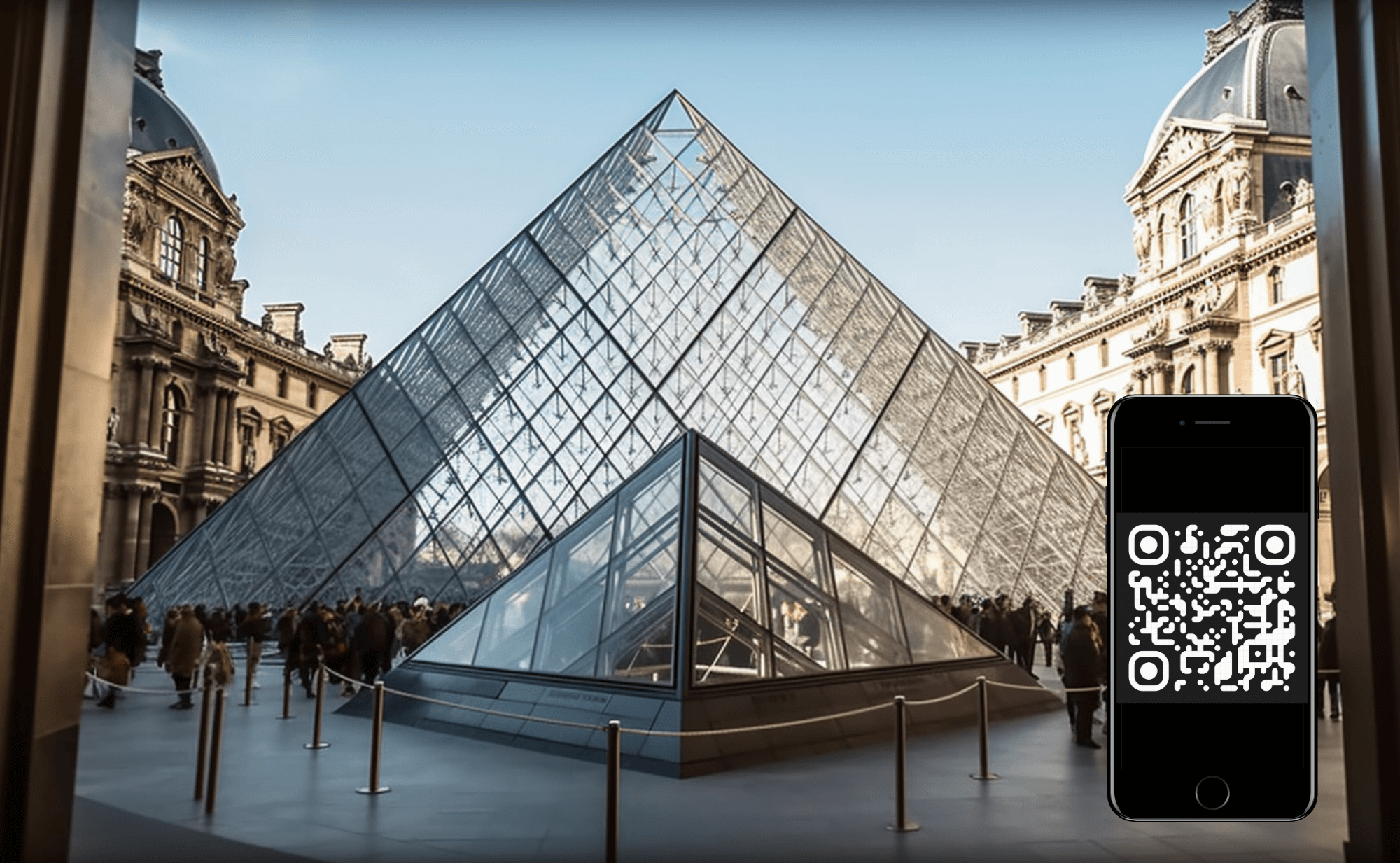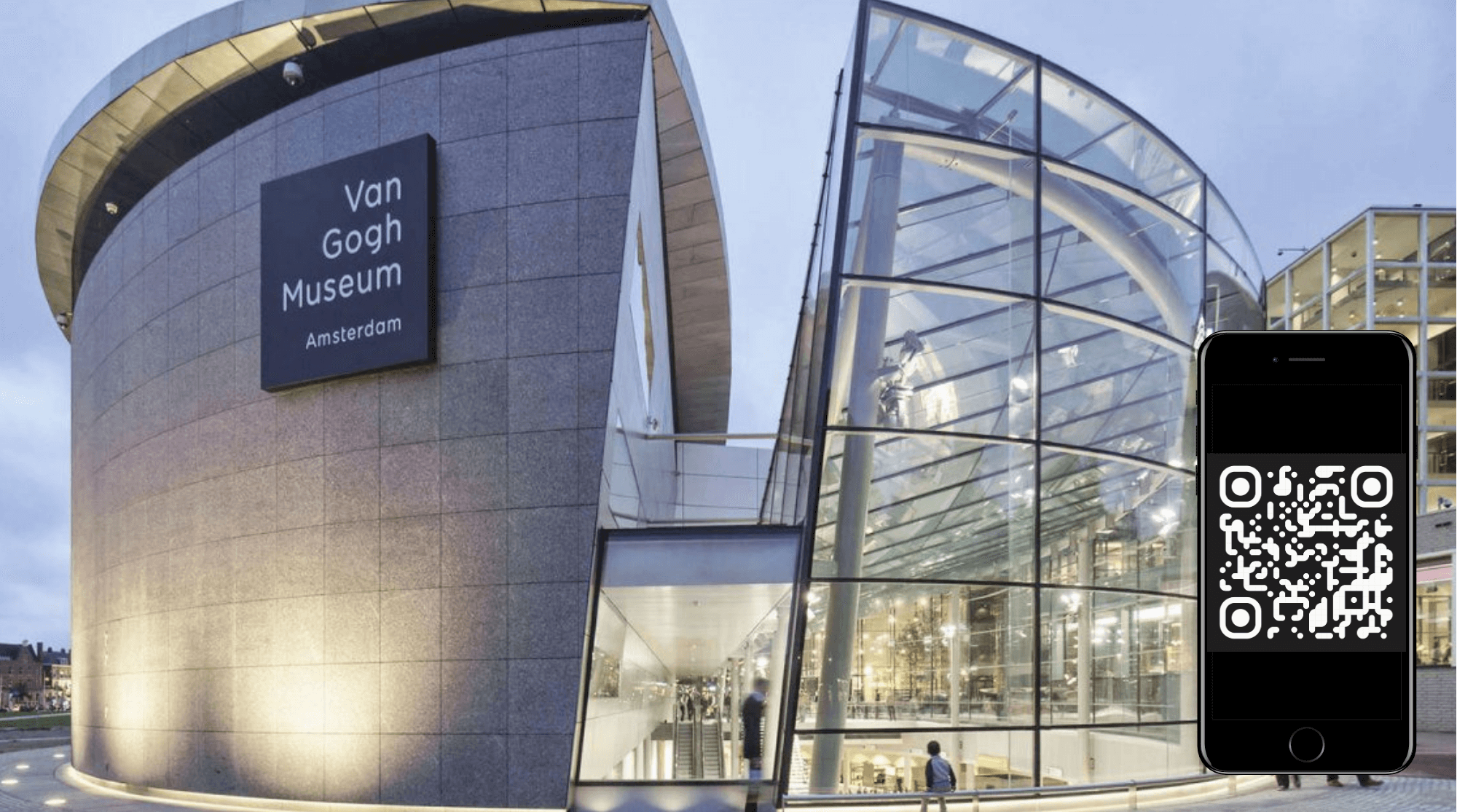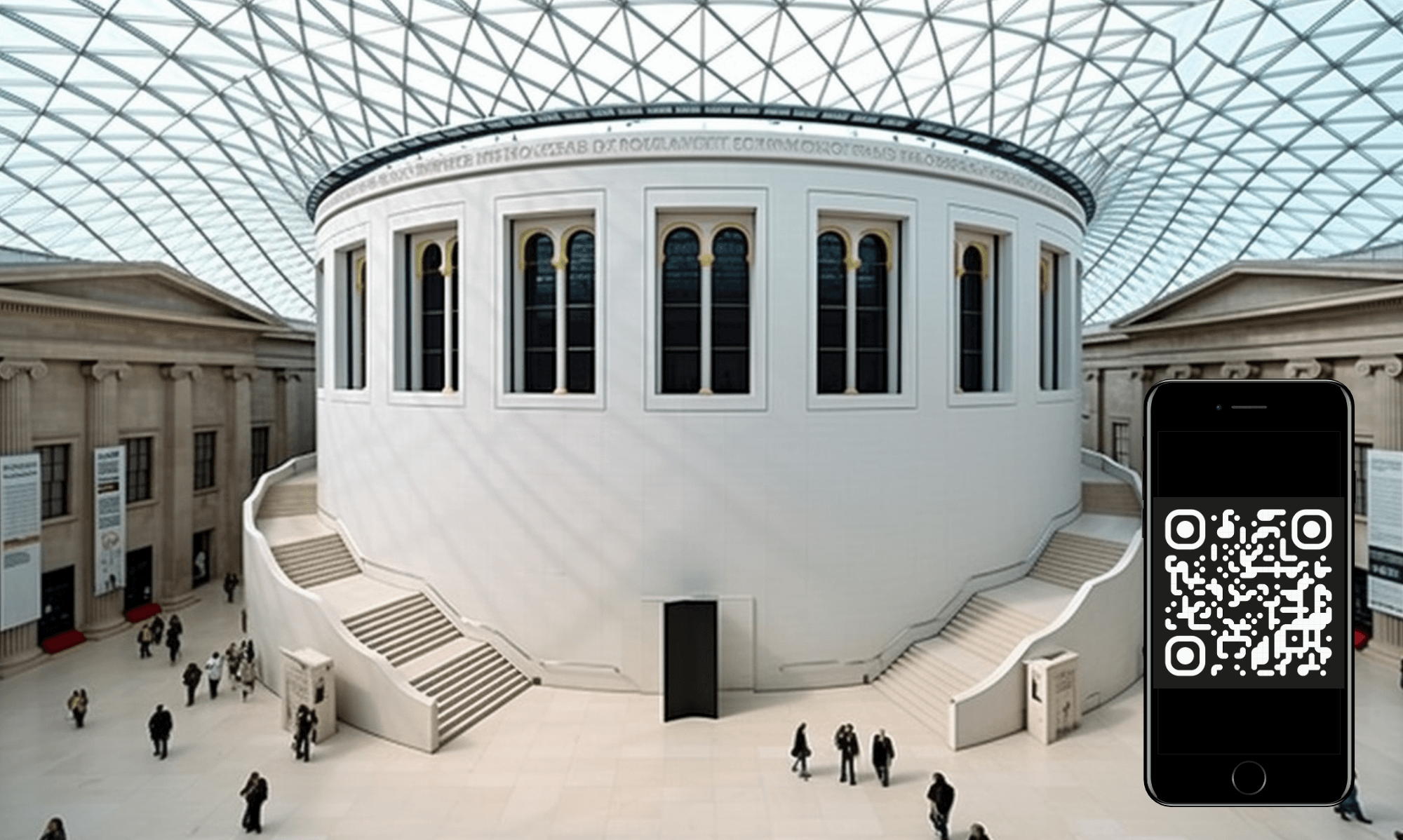The benefits of QR codes for museums, galleries, and exhibition centers
Exhibition centers and museums strive to immerse visitors in cultural heritage, offering an enriching experience surrounded by art. Leveraging a QR code generator tailored for art objects to enhance visitor engagement and streamline event organization proves invaluable.

What does a dynamic QR code for art look like?
Exhibition centers use the same interactive codes that can be seen in advertising, on product labels, in restaurants, on documents, etc. Only the content differs: in this case, it will be directly or indirectly related to the object of art. A modern QR code generator allows you to add any file or URL to a QR code, unlocking endless possibilities for users.
Dynamic QR codes offer unique opportunities for museums and galleries, from providing additional exhibit information to offering virtual tours. These interactive codes serve as a boon for both exhibit organizers and visitors.
Ways to use the QR code generator in the arts
QR codes serve various purposes in the art world:
 – providing additional information. Learning more about an exhibit than just looking at it is much more interesting. Therefore, it is worth making a QR code for every artwork to share a description, the history of creation, and other fascinating facts enriching the viewer's understanding;
– providing additional information. Learning more about an exhibit than just looking at it is much more interesting. Therefore, it is worth making a QR code for every artwork to share a description, the history of creation, and other fascinating facts enriching the viewer's understanding;
– conducting interactive tours. QR codes can be used to provide virtual tours of the exhibition center. Visitors don't need to be physically present in the museum to have fun. Galleries can engage audiences beyond physical boundaries by simply creating and distributing museum QR codes on the official website or social media platforms;
– organizing events. Utilizing QR codes to direct visitors to specific rooms or exhibits streamlines navigation within the gallery, ensuring a seamless and enjoyable experience for guests attending events;
– selling tickets. You will take some of the burden off your employees with a QR code generator. Codes simplify the process of buying and selling tickets to exhibitions: your guests can purchase them online in advance or scan a QR code directly at the entrance to the exhibition center, which will redirect them to the payment page;
– streamlining visitor access. Previously, manually checking the details on each person's ticket was necessary. However, this took a lot of time and effort. It is much better to create a QR code and place it on the ticket; visitors can instantly scan the codes at the entrance to the museum. This way, you optimize your event access control system.
How to make QR codes for art following the example of famous museums
Practice shows that many exhibition centers worldwide are introducing QR codes into systematic and thematic museum exhibitions. Pursuing different goals, they manage to achieve great success in holding events. Try to adopt best practices from these complexes:
 1. British Museum, London (UK): uses QR codes to provide additional information about its exhibits and to organize interactive tours.
1. British Museum, London (UK): uses QR codes to provide additional information about its exhibits and to organize interactive tours.
2. Metropolitan Museum of Art, New York (USA): prefers to convert links to QR codes for visitors to access online exhibitions.
3. Louvre Museum, Paris (France): uses dynamic QR codes for artwork to provide detailed information about art objects and streamline ticket sales.
4. National Museum of Natural Sciences, Washington (USA): conducts virtual tours using QR codes and provides visitors with event information.
5. Van Gogh Museum, Amsterdam (Netherlands): uses QR codes to tell the story of Van Gogh's life and work in an interactive format.
Thanks to the QR code generator for links and files, any exhibition can become more interactive, exciting, and memorable. This confirms that creating QR codes and actively sharing them to promote art is worth making!
